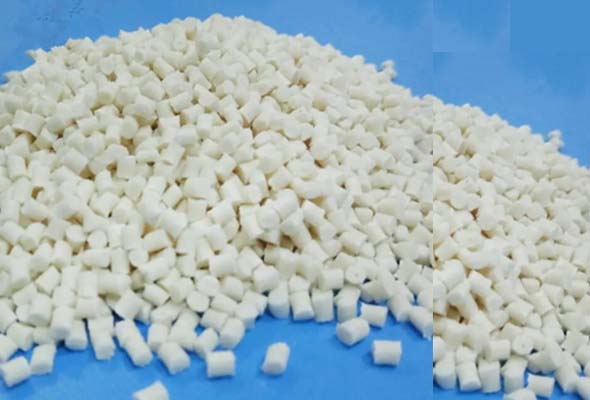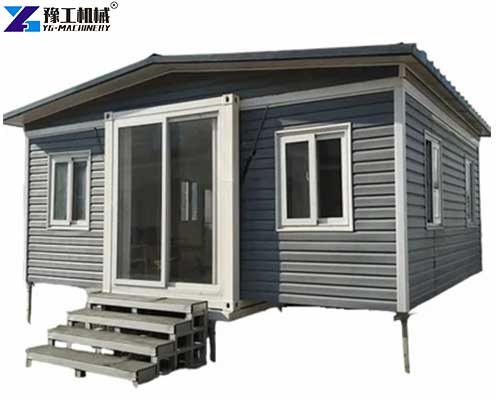What is Thermoplastic?
Thermoplastics are plastics that can flow and deform when heated and retain a certain shape when cooled. The plastic can repeat the process after it cools and solidifies. That is, plastic that melts after heating flows into the mold, and melts again after heating. Most linear polymers are thermoplastic, so they can be easily processed by extrusion, injection, or blow molding.
What are the Common Thermoplastics?
Thermoplastics can be repeatedly heated to soften and cool to harden within a specific range. Polyethylene, polypropylene, polyvinyl chloride, polyamides, acrylics, copolymers, chlorinated polyethers, etc. are all thermoplastics.
Polyethylene (HDPE and LDPE): They are the most common plastic material and are very durable. Widely used for processing bottles, cans, tanks, and shipping containers.
PVC: It is a versatile plastic that is resistant to abrasion, chemicals, atmosphere, and fire. It can be used in the paper industry, food, credit card, furniture, toys, and clothing packaging manufacturing.
PP: It is light, transparent, durable, and non-absorbent. Can be used to make textile fibers, gaskets, packaging, carpets, ropes, packaging, and furniture.
PS: This plastic material is cheaper and is often used to replace glass, aluminum, and wood. It is also used in packaging (including food), containers, boxes, lamps, disposables, toys, and cups.
What is a Thermoset Plastic?
Thermosetting plastics are plastics that cannot be softened and repeatedly molded under heat or other conditions and cannot be dissolved in solvents. Thermosets retain their strength and shape even when heated. Therefore, this type of plastic is ideal for producing permanent parts and large, sturdy items.
Common Thermoset Plastics
Typical thermosetting plastics are phenolic, epoxy, amino, unsaturated polyester, furan, polysiloxane, and other materials. They have the advantages of high heat resistance and are not easily deformed by heat. The disadvantage is that the mechanical strength is generally not high, but the mechanical strength can be improved by adding fillers to make laminates or molded materials. Common thermosetting plastics include bakelite, electric jade, decorative boards, and unsaturated polyester plastics.
Phenolic resin (PF)
Phenolic resin, commonly known as bakelite or bakelite, has a yellowish-brown or black appearance and is a typical representative of thermosetting plastics. It is mainly used in the field of reheating and can also be used as an adhesive for plywood, grinding wheels, and brake pads.
Urea Formaldehyde Resin (UF)
Urea-formaldehyde resin is a colorless plastic that can be used as a molding compound and binder and is prepared from urea and formaldehyde. Urea-formaldehyde resin can be used to manufacture tableware, bottle caps, and other daily necessities and mechanical parts.
Polyurethane (PU)
The density of polyurethane flexible foam is 0.015~0.15 g/cm3, and it is shaped into a block, which is easy to cut for furniture and packaging materials. It is mainly used for the insulation layer of low-temperature transport vehicles, building materials, furniture, etc.
Difference Between Thermoplastics and Thermoplastics
The difference between thermosets and thermoplastics is primarily in physical and performance differences.
Physical Differences
The curing process of thermoplastics is reversible and it can be reused and recycled. Thermosets form cross-linked structures during curing, which prevent them from melting and remodeling. Once solidified, it cannot be returned to a liquid state and therefore cannot be recycled.
Differences in Performance
Thermoplastics are solid in the teahouse and turn into flowable plastics when heated. Thermoplastics take the shape of a mold when processed through an injection or blow molding process. They have properties such as high strength, flexibility, and resistance to shrinkage. Thermoplastics are versatile materials that can be used to produce plastic bags, bearings, high-precision mechanical parts, etc.
Thermoset polymers are usually liquid at room temperature and irreversibly harden when heated or chemically added. Thermosets generally have higher chemical and heat resistance, as well as higher strength structures that are less prone to deformation.
Thermosets VS Thermoplastics
| Thermoplastic | Thermoset Plastic | |
| Molecular Structure | Linear polymers: weak molecular bonds in linear form | Network polymers: high degree of crosslinking and strong chemical molecular bonds |
| Melting Point | The melting point is lower than the degradation temperature | The melting point is higher than the degradation temperature |
| Mechanical | Flexible and elastic, high impact resistance, strength comes from crystallization | Inelastic and brittle, strong and rigid, strength comes from cross-linking |
| Polymerization | Addition polymerization: depolymerization during the manufacturing process | Polycondensation: Polymerization during processing |
| Micro Structure | Consists of solid hard crystalline and elastic amorphous regions | Composed of solid thermosetting resin and reinforcing fibers |
| Size | Size expressed in molecular weight | Dimensions are expressed in terms of crosslink density |
| Is it recyclable | Recyclable by heating | not recyclable |
| chemical resistance | High chemical resistance | Heat and chemical resistance |
| Crack Repair | can be easily repaired | Hard to be repaired |
| Solubility | Soluble in organic solvents | Insoluble in organic solvents |


